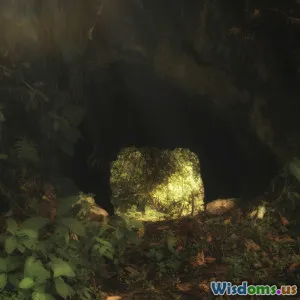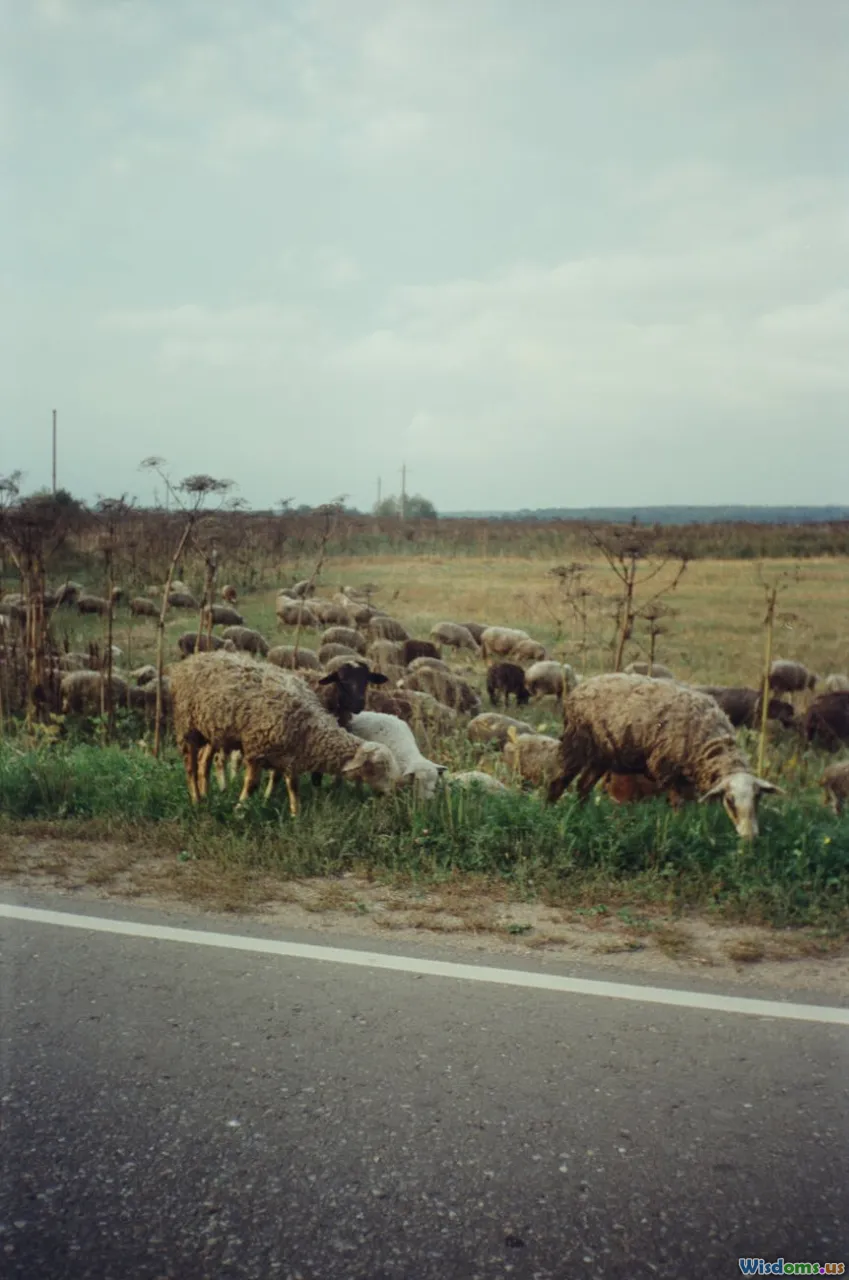
The Chupacabra Case Top Five Sightings Explained
18 min read Explore the top five most compelling Chupacabra sightings and the stories behind each mysterious case. (0 Reviews)
The Chupacabra Case: Top Five Sightings Explained
Few legends have captivated Latin American and global imaginations like the Chupacabra—a vampiric entity blamed for mysterious livestock deaths and found at the heart of countless rural tales. The name "chupacabra" translates from Spanish as "goat sucker," an apt moniker backed by grisly stories of animals drained of blood. But urban myth, eyewitness anxiety, and scientific skepticism collide where sightings occur. Analyzing the top five Chupacabra cases, we explore the details, cultural impact, and possible explanations behind each notorious episode.
The Puerto Rican Origin: 1995's First Verified Reports

The Chupacabra phenomenon did not begin in vague antiquity—its modern chapter commenced in March 1995 near Canóvanas, Puerto Rico. That spring, over 150 farm animals—ranging from chickens to goats, rabbits to sheep—were found either dead or, more chillingly, exsanguinated, with unexplained puncture wounds on their necks.
The panic reached a critical point when a local woman, Madelyne Tolentino, claimed to have seen a creature outside her window. Tolentino described a bizarre biped roughly four to five feet tall, with large, oval, black eyes, spines along its back, and thin limbs—features subsequently echoed in media and later eyewitness accounts. Her description matched neither any known predator on the island nor common folklore, giving further weight to the sensation in newspapers and on radio talk shows.
Veterinary investigations of the animal carcasses proved frustrating. While puncture wounds and blood loss were real, tests showed no unusual toxins or permanent trauma. Experts cited possible frenzies among wild dogs, mongooses, or small predators, but the puncture pattern kept the mystery alive. Many biologists believe the outbreak may have reflected hysteria seeded by rabies outbreaks and a wave of suspicious deaths, yet believers cite the uncanny regularity of the wounds and absence of tracks.
This now-legendary Puerto Rican outbreak defined the Chupacabra's signature, reigniting older fears—a cryptid with vampiric tastes may be among us.
Chile's Atacama Panic: Desert Shadows, 2000

Five years after the Puerto Rican wave, the Chupacabra struck further south in the arid lands of Chile’s Atacama Desert. In July 2000, panic gripped the small town of Calama as scores of goats and sheep were found drained of blood, each marked by the now-familiar twin puncture wounds. Ranchers began organizing night watches; sightings of a gray, kangaroo-like animal or a winged beast multiplied, fanned by tabloids and local TV reports.
What distinguishes this case is the scale and suddenness—the killings occurred over mere weeks, with more than 200 animal deaths reported in villages within a 50-mile radius. Chilean police opened an official investigation, while environmental officers inspected the crime scenes. Critics pointed to feral dogs and outbreaks of disease, but the lack of scattered remains or conventional kill patterns perplexed experts.
An academic team led by Dr. Luis Figueroa of the University of Comahue conducted on-site surveys. They noticed that some injured livestock had survived the attacks, displaying deep, symmetrical wounds with swelling but minimal tearing. These data led some zoologists to posit the involvement of a rarely-seen wildcat, like the pampas cat, whose bites could create such injuries but would not explain the exsanguination.
Locals’ testimonies cemented the Chupacabra’s chilling aura, with reports of large, luminous eyes shining from brush thickets and a stench "like sulfur or rotten eggs"—classic tropes now woven deep into Atacama folklore.
Texas Hill Country Sightings: The Blue Dog Mystery, 2004–2011

While Latin America claims the earliest sightings, the Chupacabra migrated swiftly into U.S. consciousness. Between 2004 and 2011, Texas became an improbable epicenter—especially in the Hill Country, where ranchers unearthed the now-infamous “blue dog” corpses. Unlike Puerto Rico’s spiky, reptilian figures, these specimens were emaciated, bluish-gray canids, hairless or patchy, with elongated jaws and pronounced competition teeth.
One signature incident occurred in July 2004, when Hallettsville rancher Devin McAnally shot a hairless animal attacking his chicken coop and took the carcass to a local vet. DNA analysis, conducted by Texas State University and later confirmed by the Texas Parks and Wildlife Department, revealed coyotes (Canis latrans) infected with severe cases of sarcoptic mange—a mite infestation causing hair loss and thickened, lumpy skin.
Game camera photos and videos went viral, each showing wolf-like predators with grotesque proportions and baleful stares. Though scientific analysis debunked these Texas monsters as diseased coyotes, the blue dogs further inflamed the legend, serving as fodder for cable TV documentaries and cryptozoology forums.
What stands out is the Chupacabra’s morphing image: in Latin America, it is vampiric and almost alien; in the U.S., it has canine overtones. This metamorphosis exemplifies a phenomenon called “cultural contamination,” where one mystery assimilates with existing monsters. The Texan episode proves how modern myths can anchor themselves in very real but misunderstood animal maladies.
The Moscow Outbreak: Chupacabra in Eastern Europe, 2015

In February 2015, a series of gruesome livestock deaths in Russia’s rural Moscow region fueled both panic and suspicion. Villagers discovered chickens and rabbits killed in locked barns with neck punctures and, critically, drained of blood—a narrative identical to prior Chupacabra reports, thousands of miles away from the original hotspots.
Olga Shinina, the vet overseeing Borodino village, noted in regional media that some animals exhibited sharp, clean entry wounds "not consistent with canine or mustelid predation." Shortly after, stories proliferated online of an unidentified predator jumping fences and disappearing into wintry forest.
The situation ignited a homeland controversy—a blend of folklore, fear, and dubious video clips showing russet shapes darting behind corrugated sheds. Russian cryptozoologists conducted stakeouts, though wildlife experts suspected clever weasel species or ferrets, sometimes escaped pets, acting with rare audacity during a particularly severe winter. One birder even lobbed a hypothesis: was a Siberian owl guilty? However, the organized puncture patterns, claimed blood loss, and barn-locked crime scenes kept the supernatural option alive among believers.
The Moscow outbreak mirrors a familiar pattern: strange deaths spark copycat hysteria, grow online, and spread investigators’ attention across flawed but fascinating folklore. Here, the Chupacabra legend mutates into a somewhat different creature amidst Russia’s snowy farmlands, yet the pattern—fear, photos, questionable remains—stays the same.
Veracruz’s Goat Massacre: The Recent Surge, 2018

The legend’s most recent and dramatic resurgence hit rural Veracruz, Mexico, between June and August 2018. Farmers awoke to horrifying scenes—dozens of goats dead, all bearing small, neat neck wounds, and displaying virtually no blood at the slaughter sites. The string of incidents echoed across Jalcomulco and surrounding villages, stirring fear and prompting farmers to stage vigils. State health officials responded with veterinary teams, security patrols, and calls for calm.
Eyewitnesses told Televisa Veracruz startling stories: one group of brothers claimed to glimpse a “creature like a giant bat” vanishing into brush after hearing goats bleat in the dark. Several captured blurry photos of unnatural shadows near their herds. Many villagers remarked on an acrid, fetid smell in the air—another familiar hallmark from previous outbreaks.
Forensic inspection, reviewed by Dr. Rafael Pacheco of the Universidad Veracruzana, determined both new and old animal wounds, but genetic testing (when possible) again pointed to wild dogs, coyotes, and, in some isolated attacks, large opossums. Still, for those whose herds were destroyed, scientific reassurance brought little comfort against a backdrop of myth. Crop and livestock insurance claims referenced "el Chupacabra" as a source—giving the legend a legal as well as psychological presence. National magazines ran slick features, reviving fears among a public wary of supernatural explanation but equally skeptical of official answers.
The Veracruz case displays the durability of the Chupacabra phenomenon in the digital era, catalyzed by smartphone photos, viral videos, and online speculation—proof that myths can thrive side-by-side with advancing forensic science.
Shared Patterns and Scientific Scrutiny: What Unites the Top Sightings?

Across Latin America, the United States, and Eastern Europe, the top Chupacabra cases bear striking similarities. Each is rooted in unexplained animal deaths, sudden panics, sensationalized media coverage, and eyewitness descriptions that mix the uncanny with the local fauna. Science and folklore joust over every incident—a test of what constitutes credible evidence and how meaning is made from uncertainty.
One notable trend: puncture wounds without evidence of predatory feeding. Unlike typical carnivore kills—marked by torn flesh and scattered remains—Chupacabra cases often feature minimal visible trauma and a puzzling scarcity of blood around victims, supporting the blood-drinker narrative. Yet livestock predation research shows that wild dogs and coyotes can kill multiple animals in a single frenzy, and some wounds, while atypical, aren’t physiologically impossible.
Anthropologist Dr. Benjamin Radford attributes many cases to “modern legend-building”: uncertainty swirls after animal deaths, inspiring outlandish yet vivid stories, while mass media spreads the most compelling details. This phenomenon is called “ostension”—folklore manifesting through lived experience, as with witch trials or UFO encounters. The Chupacabra fits this archetype, blending cultural anxiety with genuine ecological challenges such as increased predator ranges and habitat disruption.
At the same time, photographs (frequently blurry), dead “specimens” (usually suffering from disease or misidentification), and local reports ensure the Chupacabra remains a mutable mystery—the cryptid that never quite leaves the pasture.
How to Investigate a Chupacabra Assault: Steps and Red Flags

For farmers, ranchers, or cryptid-enthusiasts confronted by suspicious animal deaths, a systematic, scientific response is crucial. Here is an actionable guide:
- Secure the Scene: Restrict access to affected sites to prevent cross-contamination or tampering. Photograph every carcass in situ—angles, wounds, and overall context—with timestamp.
- Record Details: Make meticulous notes: time, environment, weather, recent animal behavior, and the number of victims. Identify any tracks, spoor, or evidence nearby (discarded fur, scent marks, or droppings).
- Forensic Assessment: Seek professional veterinary examination as soon as possible. Document wounds in high-resolution and, if possible, collect swabs for DNA or toxin analysis. Make careful note of blood pooling to assess exsanguination claims.
- Interview Witnesses: Encourage detailed, independent narratives. Avoid leading questions—visual descriptions, unusual sounds or smells, and animal behavior must be documented verbatim.
- Consult Experts: Submit collected evidence to academic or governmental wildlife departments. Corroborate anecdotal claims with known wildlife ranges and patterns of predation in the area.
- Monitor Media: Track subsequent local reports for similar incidents, noting consistencies or discrepancies. Large, sudden outbreaks often coincide with ecological changes (breeding cycles, weather events).
- Preservation of Evidence: Keep artifacts (bones, dead specimens) refrigerated for a post-mortem examination and future study.
Adhering to this process not only strengthens the quality of evidence, but also can prevent sensationalist panic driven by speculation. It is often the absence of this due diligence that allows urban legends or cryptid myths to grow unchecked.
The Chupacabra in Popular Culture: Evolution from Panic to Meme

Today, the Chupacabra has transitioned from agricultural boogeyman to global pop icon. TV series such as The X-Files and Supernatural, as well as video games like Red Dead Redemption, feature Chupacabra-themed storylines or adversaries. The creature's morphing features—sometimes spiky, reptilian; sometimes mangy and canine—have also made it popular tattoo fodder, Halloween costume inspiration, and subject for dozens of cryptozoology documentaries.
In the age of memes and social media, new "sightings" go viral in hours, fueling both tongue-in-cheek humor and fresh bouts of alarm. Some rural communities now host Chupacabra festivals—turning dread into economic opportunity, with themed foods and crafts. Even NASA’s Puerto Rico facility has reportedly received curious requests to "study" the beast’s possible alien origins!
At heart, the legend flourishes because it mirrors changing human anxieties: fears of predation, economic vulnerability, the unknown lurking in darkness, and the ever-present pull between science and fantasy.
The Chupacabra’s enduring resonance lies in its adaptability: whether terrorizing a Caribbean jungle, prowling Texas brush, or ghosting through snow in Russia, it absorbs new myths and keeps the quest for answers alive. Each case, every claimed sighting, becomes less about monsters—and more about how we tell stories to frame what we don’t yet understand.
Rate the Post
User Reviews
Other posts in Supernatural Legends and Folklore
Popular Posts















